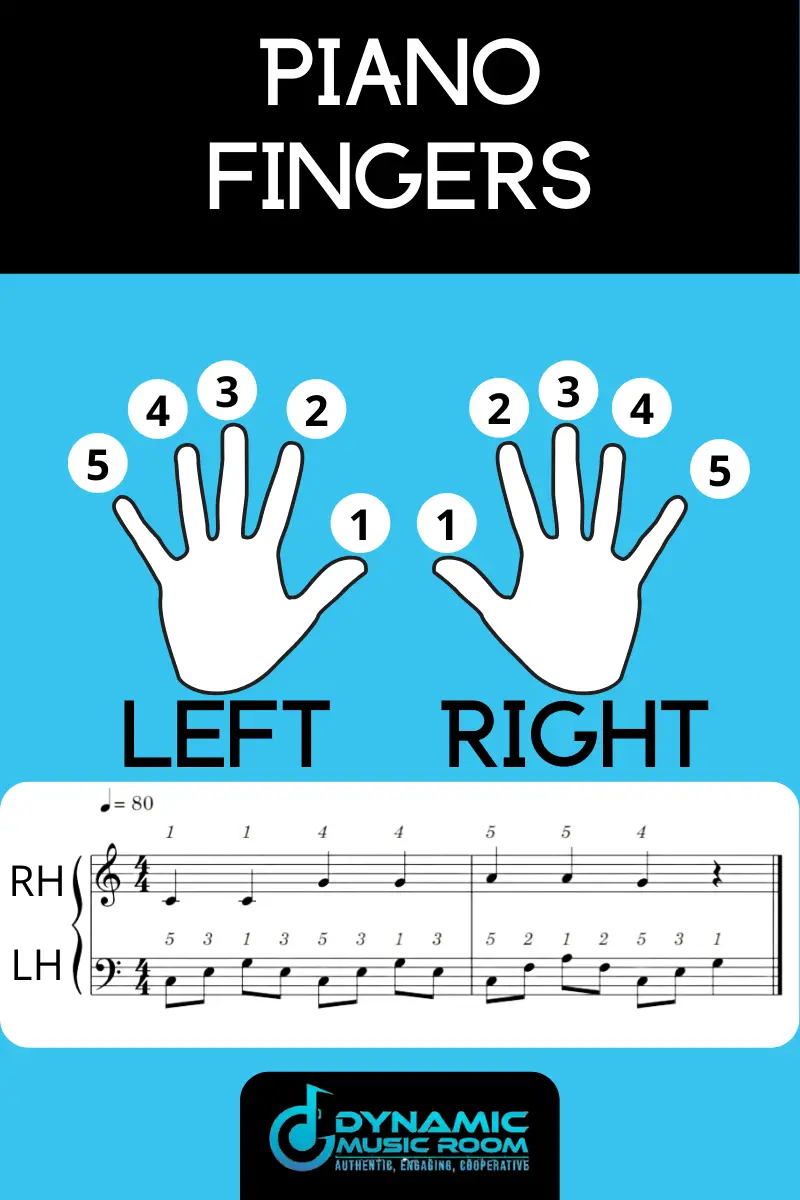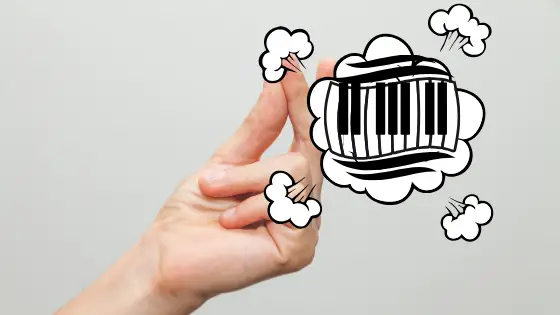Have you heard of piano fingers but you’re not sure what they are?
Do you want to learn a little more about the piano fingerings?
Piano fingers and piano fingerings are loose terms either meaning the same thing or completely different things.
When my students ask me about these, I answer their questions based on what they really mean when they ask:
What are piano fingers?
Piano fingers are the numbers associated with each finger to help a piano player know where to place their fingers. With advanced pieces, knowledge of these fingerings helps to play a piece more effectively. Piano fingers may also refer to a rare syndrome where the fingers and toes are abnormally long.
Check out the rest of the article for more details and answer to commonly asked questions related to pianos and fingers.
Table of Contents
What Are The Piano Finger Numbers?
The piano finger numbers (most often referred to as piano fingerings) are a common way of referring to the fingers on each hand.
The numbers translate as follows:
- Thumb = 1
- Index = 2
- Middle = 3
- Ring = 4
- Little = 5
This means with palms facing down, your right-hand numbers go 1, 2, 3, 4, and 5 from left to right.
Your left-hand finger numbers go 5, 4, 3, 2, and 1 from left to right.
On piano sheet music, this is often notated by small numbers above or below certain notes. These fingerings are provided as a hint to the player how they should finger the notes.
To determine which hand plays which notes, you follow the general rule as follows:
- The right hand plays the top staff or group of notes.
- The bottom staff belongs to the left hand.
Therefore, the numbers on these notes match the hand belonging to the staff (as the example shows).
Check out how to memorize piano keys.

What Does It Mean To Have Piano Hands?
When talking about piano fingers, I’m often asked about piano hands and what this means.
Having piano hands doesn’t refer to a size of hand or fingers (despite the common misnomer called piano fingers syndrome).
Piano hands is used to refer to a way the hands move when they play the piano.
Your hands are held and move differently when playing, so doing this in this way is called by many, “piano hands.”
Piano hands include the following traits:
- Open relaxed hands
- Quick moving fingers
- Accurate touch and placement
- Curved yet strong fingers
- Powerful yet delicate when needed
Learn about how to play piano with two hands.
Can I Play Piano With Short Fingers?
Yes, you can!
While certain passages are easier with a larger hand span, even child prodigies can play advanced pieces with their small hands.
This is like saying because you’re tall, you’re automatically good at basketball. Sure, it helps, but it’s just a small piece of the puzzle.
However, a shorter person will never play the tall defensive center position. They can however, be a point guard.
It’s the same with piano.
One of my favorite musicians is Elton John. If you’ve never seen his fingers, they’re quite small.
He started out with classical piano training and was known for being quite talented in this as well as the blues and rock he was playing as a young boy.
He knew his small hands would prevent him from being a master classical pianist. But did this prevent him from becoming a master popular pianist?
Not even a little. He found the style and music that worked for him, and now he’s regarded as one of the best musicians who ever lived.
You’re not alone in worrying about this, but don’t stress out.
Robert Schumann, a famous piano composer from the early 1800s, invented a finger stretching device to make his fingers longer as he was stressed about having shorter fingers.
They ended up breaking his fingers and affecting his ability to play for the rest of his life.
Does Playing Piano Make Your Fingers Longer?
No, playing piano doesn’t affect the length of your fingers at all. But there is a phenomenon which has led to this myth.
When you have bad posture, you tend to slouch forward. When you straighten your back and stand up straight, it makes you seem taller.
You didn’t actually get taller; the posture used your height to its fullest.
It’s the same thing with people who play piano a lot.
Their fingers are more flexible and powerful. This gives the illusion of growing fingers when the hands are held out.
You may also enjoy learning about what family the piano is in.
Is Playing Piano Bad For Your Hands?
No, unless you’re using bad technique.
For those who let their fingers bend backwards when they play or force their hands too hard, over time, you may end up with pain and minor problems in your fingers and hands.
This is also true for those who practice for long periods sporadically.
Just like you shouldn’t go run a marathon without training, don’t go for a 6-hour practice session out of nowhere.
Build up to it and train yourself. Let your muscles and tendons develop the strength gradually.
Using good technique and common sense will actually help your joints and hands stay healthier longer.
Conclusion
I hope you enjoyed learning about what piano fingers are.
The fingerings on piano are an important thing to know as you improve in your piano skills.
One of the best ways to learn is through practice, and you need to stay motivated to practice regularly with good technique.
I’ve been obsessed with a piano learning program called Flowkey lately. It helps me stay motivated by offering over 1,500 songs to learn and great video courses all for a low monthly rate (though there’s also a free version available).

